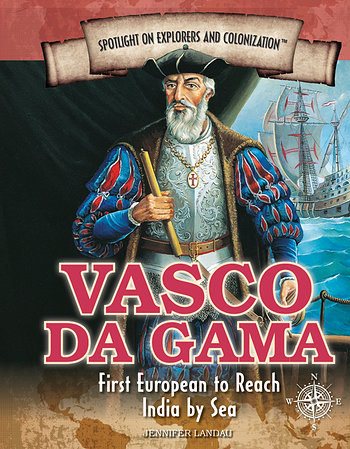
The residents of Calicut were actually Hindu, a fact that was lost on da Gama and his crew, as they had not heard of the religion. But da Gama’s own ignorance of the region, as well as his presumption that the residents were Christians, led to some confusion. Here, da Gama was turned back by the ruling sultan, who felt offended by the explorer’s modest gifts.īy early April, the fleet reached what is now Kenya, before setting sail on a 23-day run that would take them across the Indian Ocean. In early March of 1498, da Gama and his crew dropped their anchors in the port of Mozambique, a Muslim city-state that sat on the outskirts of the east coast of Africa and was dominated by Muslim traders. By January, as the fleet neared what is now Mozambique, many of da Gama’s crew members were sick with scurvy, forcing the expedition to anchor for rest and repairs for nearly one month. His choice of direction was also a bit of a rebuke to Christopher Columbus, who had believed he’d found a route to India by sailing east.įollowing several months of sailing, he rounded the Cape of Good Hope and began making his way up the eastern coast of Africa, toward the uncharted waters of the Indian Ocean. To embark on the journey, da Gama pointed his ships south, taking advantage of the prevailing winds along the coast of Africa. Gabriel, to find a sailing route to India and the East. On July 8 of that year, he captained a team of four vessels, including his flagship, the 200-ton St. Historians know little about why exactly da Gama, still an inexperienced explorer, was chosen to lead the expedition to India in 1497. In fact, his impetus for finding a route was driven less by a desire to secure for more lucrative trading grounds for his country, and more by a quest to conquer Islam and establish himself as the king of Jerusalem. The trip, in turn, sparked a renewed interest in seeking out a trade route to India.īy the late 1490s, however, King Manuel wasn’t just thinking about commercial opportunities as he set his sights on the East. This journey was significant it proved, for the first time, that the Atlantic and Indian oceans were connected. In 1487, an important breakthrough was made when Bartolomeu Dias discovered the southern tip of Africa and rounded the Cape of Good Hope. Still, for all his work, the southern portion of Africa-what lay east-remained shrouded in mystery. Henry the Navigator never did locate Prester John, but his impact on Portuguese trade along Africa’s east coast during his 40 years of explorative work was undeniable. He also believed that he could find and form an alliance with Prester John, who ruled over a Christian empire somewhere in Africa. He dispatched ships to explore the western coast of Africa to expand Portugal’s trade influence. Much of that was due to Henry the Navigator, who, at his base in the southern region of the country, had brought together a team of knowledgeable mapmakers, geographers and navigators. By this time, Portugal had established itself as one of the most powerful maritime countries in Europe. Known as a tough and fearless navigator, da Gama solidified his reputation as a reputable sailor when, in 1492, King John II of Portugal dispatched him to the south of Lisbon and then to the Algarve region of the country, to seize French ships as an act of vengeance against the French government for disrupting Portuguese shipping.įollowing da Gama’s completion of King John II’s orders, in 1495, King Manuel took the throne, and the country revived its earlier mission to find a direct trade route to India.
When was vasco da gama born how to#
When he was old enough, young Vasco da Gama joined the navy, where was taught how to navigate.

Little is known about his upbringing except that he was the third son of Estêvão da Gama, who was commander of the fortress in Sines in the southwestern pocket of Portugal. Vasco da Gama was born into a noble family around 1460 in Sines, Portugal. He subsequently made two other voyages to India, and was appointed as Portuguese viceroy in India in 1524.

His success in doing so proved to be one of the more instrumental moments in the history of navigation. In 1497, he was commissioned by the Portuguese king to find a maritime route to the East. Explorer Vasco da Gama was born in Sines, Portugal, around 1460.


 0 kommentar(er)
0 kommentar(er)
